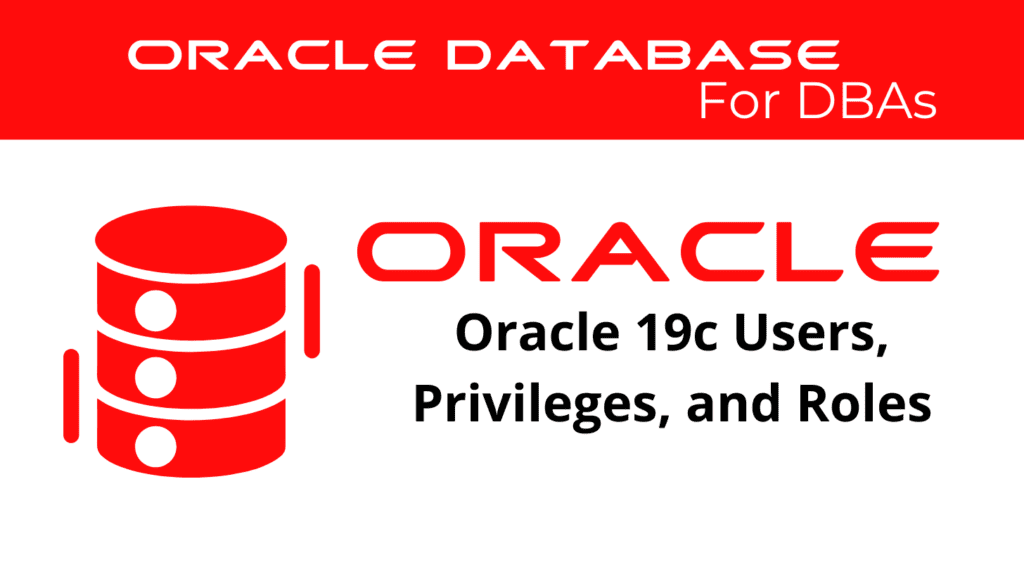
Managing Oracle database users, privileges, and roles is essential for maintaining the security and efficiency of your database environment. In Oracle 19c, effective management ensures that the right users have the appropriate privileges to perform their tasks while safeguarding sensitive data. This guide will walk you through the steps to manage users, assign user privileges, and utilize database roles efficiently.
Understanding Database Users
Managing users in Oracle 19c involves creating, modifying, and deleting user accounts. Each user account represents an individual who can access the database and perform various operations based on their assigned privileges.
Creating a User:
To create a user, you need to use the CREATE USER command. This command allows you to specify the username and password for the new user.
CREATE USER username IDENTIFIED BY password;
This command creates a new user with the specified username and password. You can also assign default tablespaces and temporary tablespaces to the user.
Modifying a User:
To modify a user, use the ALTER USER command. This command allows you to change user attributes such as password, default tablespace, and account status.
ALTER USER username IDENTIFIED BY new_password;
ALTER USER username DEFAULT TABLESPACE new_tablespace;
Deleting a User:
To delete a user, use the DROP USER command. This command removes the user and all their objects from the database.
DROP USER username CASCADE;
Manage Users – Assigning User Privileges
User privileges in Oracle 19c define what operations a user can perform in the database. Privileges can be system privileges or object privileges.
Granting System Privileges:
System privileges allow users to perform specific administrative tasks such as creating tables or views. To grant a system privilege, use the GRANT command.
GRANT CREATE TABLE TO username;
GRANT CREATE VIEW TO username;
Granting Object Privileges:
Object privileges allow users to perform actions on specific database objects such as tables, views, and procedures. To grant an object privilege, use the GRANT command followed by the object name and the privilege.
GRANT SELECT, INSERT ON table_name TO username;
GRANT EXECUTE ON procedure_name TO username;
Revoking Privileges:
If you need to revoke privileges from a user, use the REVOKE command. This command removes the specified privilege from the user.
REVOKE CREATE TABLE FROM username;
REVOKE SELECT, INSERT ON table_name FROM username;
📢 You might also like: Oracle 19c Application Root and Application Seed (Category: Oracle Database Admin)
Manage Users – Utilizing Database Roles
Database roles in Oracle 19c are named groups of related privileges that can be granted to users. Roles simplify the management of user privileges by allowing you to grant a set of privileges at once.
Creating a Role:
To create a role, use the CREATE ROLE command. This command defines a new role that can be granted to users.
CREATE ROLE role_name;
Granting Privileges to a Role:
Once you have created a role, you can grant privileges to it using the GRANT command.
GRANT CREATE TABLE, CREATE VIEW TO role_name;
GRANT SELECT, INSERT ON table_name TO role_name;
Manage Users – Assigning a Role to a User:
To assign a role to a user, use the GRANT command. This grants the user all the privileges associated with the role.
GRANT role_name TO username;
Revoking a Role from a User:
If you need to revoke a role from a user, use the REVOKE command. This removes the role and its associated privileges from the user.
REVOKE role_name FROM username;
Best Practices for Managing Users, Privileges, and Roles
Managing users, privileges, and roles effectively is crucial for database security and performance. Here are some best practices to follow:
Use the Principle of Least Privilege: Always grant users the minimum privileges necessary to perform their tasks. This reduces the risk of unauthorized access and potential security breaches.
Regularly Review User Privileges: Periodically review the privileges assigned to users and roles to ensure they are still necessary. Revoke any privileges that are no longer needed.
Implement Strong Password Policies: Enforce strong password policies to protect user accounts from unauthorized access. Require complex passwords and regular password changes.
Monitor User Activity: Use auditing features to monitor user activity and detect any suspicious behavior. Regular monitoring helps you identify potential security issues early.
Keep Roles Organized: Create roles based on job functions and assign privileges accordingly. This simplifies privilege management and ensures consistency.
By following these best practices and the steps outlined in this guide, DBAs can efficiently manage users, assign user privileges, and utilize database roles. This ensures that user access is controlled, and the database remains secure and efficient.
Conclusion
In conclusion, managing Oracle database users, privileges, and roles in Oracle 19c is a critical aspect of database administration. By understanding how to create and manage users, assign privileges, and use roles effectively, you can ensure that your database environment remains secure and well-organized. Implementing best practices such as the principle of least privilege, regular privilege reviews, and strong password policies will further enhance your database security and performance.
See more on Oracle’s website!
Be Oracle Database Certified Professional, this world is full of opportunities for qualified DBAs!





